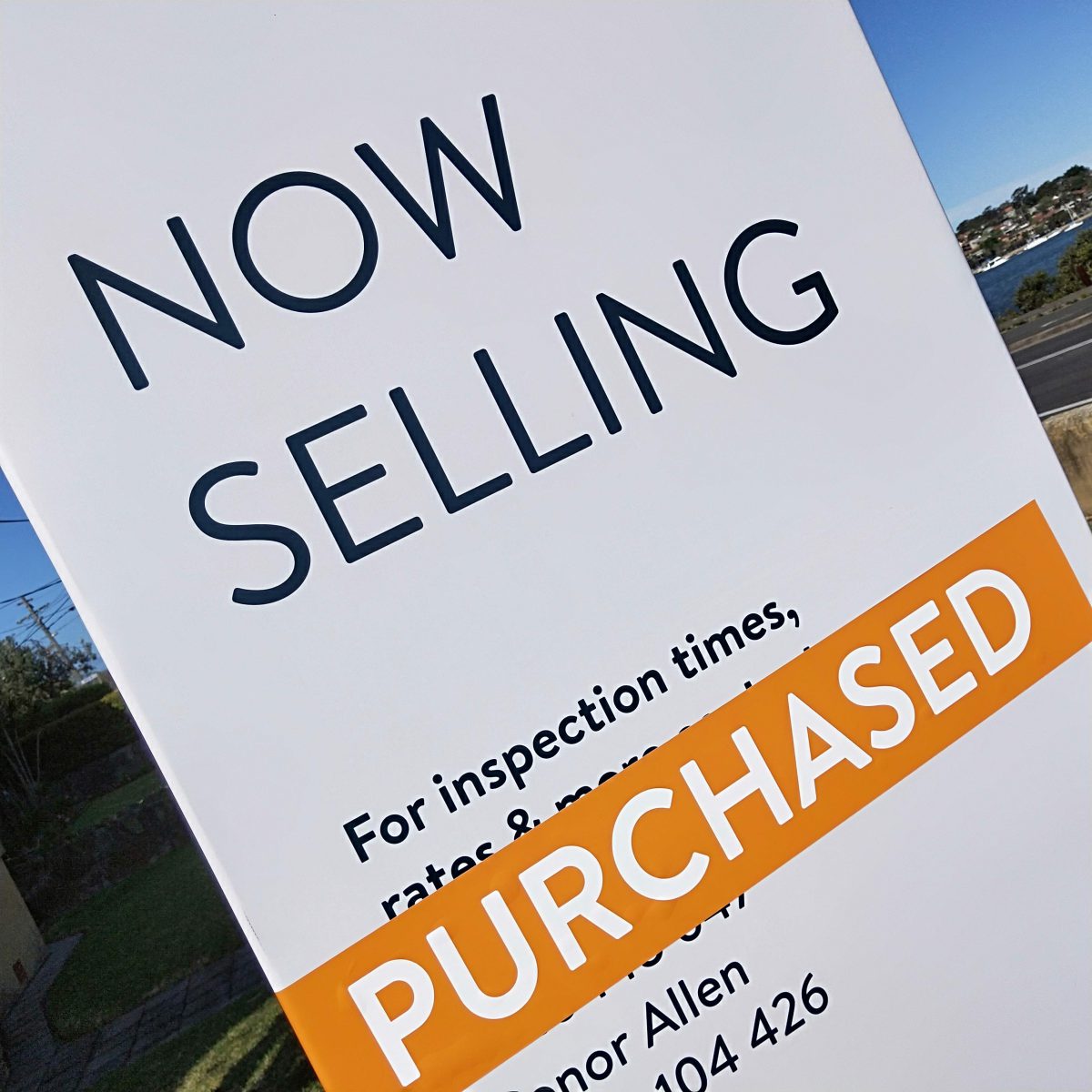
A strong signboard has the potential to generate great interest in your property from the first day it goes on the market.
It’s an essential part of your marketing campaign and you should work with your agent to produce the strongest possible image and messaging to lure buyers.
Without a signboard, buyers will be confused.
They may believe the house has been bought or taken off the market, and they are less likely to want to see the property for fear they are uninvited and prying.
Those who have seen your ads in the newspaper or online will use signboards as a way to find you. Buyers who drive to your property will be looking out for a real estate sign rather than trying to read house numbers from the road.
A signboard says loudly that you are up for sale and will welcome potential buyers into your home. That’s a great first impression. Ensure it’s made of quality materials and printed professionally.
You entice curiosity by keeping everything simple. Clear headlines and sharp graphics will get you noticed.
Follow the old marketing principle of using a “hero image”, rather than multiple photographs that make a signboard busy and unattractive.
Text is less of a concern as few will stop to read a signboard. The use of icons will communicate the vital statistics visually such as for cars, beds, and bathrooms.
The design needs to be dominated by your agent’s branding – logo and corporate colour – because it is essential buyers know who to contact.
There are different styles, sizes and prices. If budget allows, you should opt for a quality, high-impact model.
Some can be illuminated, or feature LED lighting. Solar power enables the top of the range models to use 4G technology and wireless connectivity to feature video, interactive floorplans and a gallery of images. Your agent can then update information on your property from their desk.
Some sellers have even run a clock to countdown the days and hours before it goes under the hammer.
Added extras can include flag-holders for open days, spotlights and small boxes to hold brochures and a QR code for buyers to scan with their mobile phones so they can find out more without having to wait for the next open-for-inspection time.
